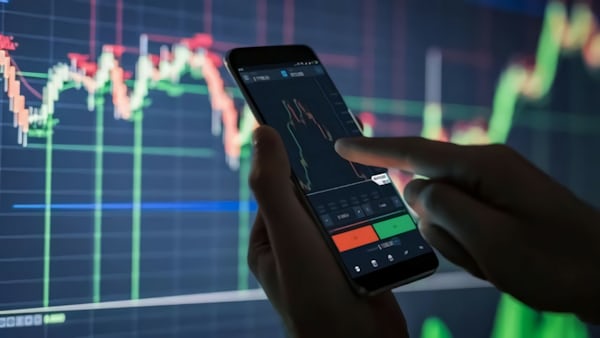10 Stocks For 2023
Summary
- The outlook for stocks in 2023 is very uncertain, with the risk of a recession.
- The Federal Reserve is very likely to increase interest rates throughout 2023.
- 10 stocks are recommended for 2023.
The outlook for U.S. stocks in 2023 is very uncertain primarily as a result of the likely increase in interest rates by the Federal Reserve throughout the year in order to reduce core PCE inflation from its current 4.7% over the past 12 months to its target of 2%. At its December 14, 2022 meeting, the Federal Open Market Committee (FOMC) increased the federal funds rate by 50 basis points to a target range of 4.25% – 4.50%. To achieve its goal, the FOMC projects an increase in the federal funds rate to a target range of 5.0% – 5.25% by yearend 2023. As a result of the higher interest rates, the U.S. unemployment rate is projected to increase from 3.7% in November 2022 to 4.6% by the end of 2023. These higher interest rates will present more fixed-income competition for equities. In addition, the central banks in England, Europe, and Japan have announced plans to increase interest rates in 2023 as they attempt to rein in inflation. As interest rates are increased, the risk of a recession increases as well.
Against this negative backdrop of rising interest rates, and the possibility of a second down year in a row for the major stock indexes in the U.S., the long-run outlook for equities, nevertheless, continues to be bright. The S&P 500 (with dividends included) has closed higher in 80% of the 80 years since 1942 while achieving an average annual return of 10%. For those with a time horizon of at least 5 – 10 years, 10 stocks are recommended for 2023.
Activision Blizzard, Inc. (ATVI): This is both a merger arbitrage recommendation as well as being currently fairly valued or undervalued. Microsoft has agreed to acquire ATVI at $95 per share, which represents a 27% premium over ATVI’s current price of $75. This transaction is subject to regulatory approval in the U.S. and EU. The Federal Trade Commission (FTC) has announced that it is opposing the merger on antitrust grounds. Microsoft is planning to defend its proposed merger in a subsequent hearing before an FTC Administrative Law Judge. Berkshire Hathaway (Warren Buffett) took a $5 billion stake in ATVI during the first quarter of 2022.
Apple Inc. (AAPL): This tech giant is the largest single stock holding of Berkshire Hathaway and Warren Buffett, representing about 40% of Berkshire’s equity portfolio. Its outlook continues to be bright with a reasonable valuation of 21 times earnings, which is slightly higher than the S&P 500 price/earnings ratio of 20. AAPL has a large ongoing stock buyback program and is earning a very high rate of return on its invested capital.
Berkshire Hathaway (BRK-B): This extremely well-managed conglomerate by Warren Buffett has substantially outperformed the market over its 56-year history, with a compounded annual return of 20% per year as compared to 10% for the S&P 500. Warren Buffett has recently been buying back its shares, indicating that he views these shares as being undervalued.
Chevron (CVX): A beneficiary of high oil prices and an excellent hedge against inflation. Berkshire Hathaway (Warren Buffett) has taken a $26 billion stake, representing its third-largest equity holding. It has a low price/earnings ratio of 10. Year-to-date, CVX is up 51%.
Danaher (DHR): A fairly valued, well-managed conglomerate serving the medical community.
Hershey (HSY): A dominant firm in the chocolate and snack market, with substantial pricing power as a result of its brand name. Growth potential remains strong in an industry that should do well in the higher interest rate environment ahead. These shares are up 22% year-to-date as compared to a 20% decline in the S&P 500.
Kraft Heinz (KHC): A dominant firm in the packaged food market, with substantial pricing power as a result of its brand names. Berkshire Hathaway owns a 26% stake in KHC. Year-to-date, KHC is up 13%.
Occidental Petroleum (OXY): Another beneficiary of high oil prices and an excellent hedge against inflation. Berkshire Hathaway has taken a 25% stake in the company. Its price/earnings ratio equals 5. Year-to date, OXY is up 119%, the best-performing stock in the S&P 500.
PepsiCo (PEP): A dominant firm in the snacks and packaged food market, with substantial pricing power as a result of its brand names. These shares are up 5% year-to-date and exhibit excellent growth potential as a result of product innovation.
Progressive Corp. (PGR): An industry leader in automobile insurance whose shares are up 25% year-to-date. PGR has been outperforming Geico (Berkshire Hathaway) in terms of margins and growth. The main reason is telematics, which PGR has been using for 10-20 years and Geico is only now beginning to introduce it. (Telematics monitors how fast you drive, how quickly you brake, and whether you are a safe driver.)
More By This Author:
2022 Year-To-Date Percentage Returns Of 5 Largest U.S. Stocks By Market Capitalization - Sat, Dec. 242022 Percentage Returns Of 5 Largest U.S. Stocks By Market Capitalization
2022 Percentage Returns Of 5 Largest U.S. Stocks By Market Capitalization - Saturday, Dec. 10




